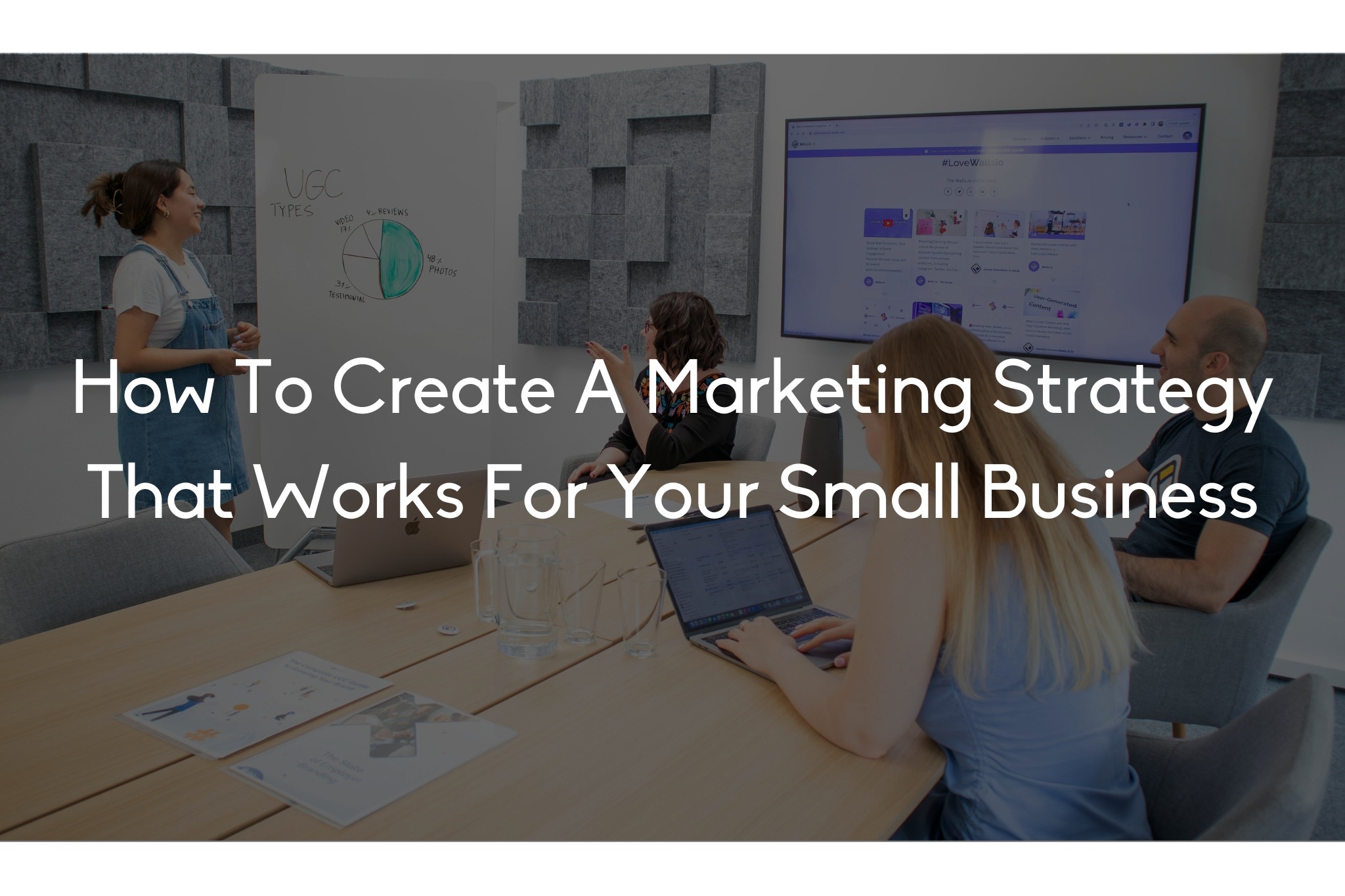
Marketing isn’t just for big brands with deep pockets. As a small business owner, you need a strategy that doesn’t drain your resources but still delivers results. You’re not looking for vanity metrics—you want real growth, real customers, and real revenue. The challenge? Navigating a noisy, competitive market without getting lost in the shuffle.
If you’ve been winging it with random promotions and inconsistent social media posts, it’s time for a shift. A clear marketing strategy can help you attract the right customers, build brand trust, and maximize your budget. Let’s break it down into a step-by-step plan that actually works.
How do you create a marketing strategy that drives growth for your small business? You need a practical, results-driven approach that aligns with your goals, connects with your audience, and keeps you ahead of the competition. Here’s how to do it.
A strong marketing strategy isn’t about being everywhere all the time. It’s about focusing on the right efforts that bring measurable results. Let’s walk through the essential steps to crafting a strategy that sets your small business up for success.
Step 1: Define Your Goals Clearly
Before you start any marketing activities, you need a clear goal. What are you trying to achieve? More website traffic? Higher sales? Increased brand awareness? Without a defined goal, you’re just shooting in the dark.
How to Set Effective Marketing Goals:
- Use SMART goals—Specific, Measurable, Achievable, Relevant, and Time-bound.
- Align goals with your business objectives (e.g., increase monthly revenue by 20% in six months).
- Keep them realistic based on your budget and resources.
- Review and adjust goals quarterly to stay on track with business growth.
Step 2: Identify Your Target Audience
Not everyone is your customer, and that’s a good thing. The key to effective marketing is understanding exactly who you’re talking to and tailoring your message to them.
Ways to Define Your Ideal Customer:
- Research your current customers—who are they, and what problems do they need solved?
- Analyze competitors and see who they target.
- Build buyer personas based on demographics, interests, and buying behaviors.
- Understand where your audience spends their time online and offline.
- Conduct surveys or interviews to gather deeper insights into customer pain points and preferences.
Step 3: Craft a Strong Brand Message
Your brand message should be simple, clear, and memorable. It needs to convey why your business exists, what makes you different, and how you help your customers.
What Makes a Strong Brand Message?
- A compelling value proposition (What do you offer that others don’t?)
- A consistent tone and voice across all channels
- A focus on solving customer problems, not just selling products
- An emotionally engaging story that connects with your audience
Step 4: Choose the Right Marketing Channels
You don’t need to be on every platform—just the ones that work for your business. The key is to pick marketing channels where your audience already is.
Common Marketing Channels for Small Businesses:
- Social Media: Facebook, Instagram, LinkedIn, TikTok (depending on your audience)
- Content Marketing: Blogging, video marketing, email newsletters
- SEO & Google My Business: Helps with local search visibility
- Paid Advertising: Google Ads, Facebook Ads (if budget allows)
- Networking & Partnerships: Word-of-mouth, collaborations, and referrals
- Influencer Marketing: Partnering with micro-influencers to reach niche audiences
- Event Marketing: Hosting or participating in local events to build community connections
Step 5: Create a Content Plan
Marketing without content is like fishing without bait. Your content should educate, entertain, and persuade potential customers to engage with your brand.
How to Build a Content Plan:
- Map out content types (blog posts, videos, social media posts, email newsletters).
- Maintain a consistent posting schedule.
- Focus on quality over quantity—valuable content wins over frequent but uninspired posts.
- Repurpose content across different platforms to maximize reach.
- Use storytelling to make your brand more relatable and engaging.
Step 6: Leverage Data & Analytics
A marketing strategy is only as good as the data behind it. Without tracking performance, you won’t know what’s working and what’s a waste of time.
Key Metrics to Monitor:
- Website traffic and sources
- Engagement rates on social media
- Conversion rates (how many leads turn into customers)
- ROI on paid ads
- Email open rates and click-through rates
- Customer lifetime value (CLV) to measure long-term success
Use free tools like Google Analytics, Facebook Insights, and email marketing reports to keep an eye on your progress.
Step 7: Optimize & Adjust
Marketing isn’t a set-it-and-forget-it game. It’s a process of testing, learning, and improving.
Ways to Continuously Improve Your Strategy:
- Double down on what’s working and drop what’s not.
- A/B test different headlines, visuals, and call-to-actions.
- Stay updated with marketing trends and consumer behavior changes.
- Seek customer feedback regularly to fine-tune your messaging and offers.
- Monitor competitors and adjust your approach to stay competitive.
Step 8: Build Relationships, Not Just Sales
Customers don’t want to feel like just another transaction. Building relationships with them leads to loyalty, repeat purchases, and referrals.
How to Foster Customer Loyalty:
- Engage with your audience—respond to comments, messages, and reviews.
- Offer excellent customer service.
- Create a loyalty program or exclusive offers for repeat buyers.
- Personalize interactions with customers through email marketing and social media.
- Show appreciation with handwritten thank-you notes or special discounts.
Step 9: Set a Marketing Budget
Even with limited funds, you can make a significant impact by investing wisely.
How to Allocate Your Marketing Budget:
- Determine the percentage of revenue to reinvest in marketing.
- Focus on high-ROI activities like SEO, content marketing, and email campaigns.
- Test different ad strategies with small budgets before scaling up.
- Look for free or low-cost tools to streamline marketing efforts.
Conclusion
Creating a marketing strategy for your small business doesn’t have to be complicated, but it does need to be intentional. Start with clear goals, understand your audience, and focus on marketing efforts that bring results. With consistency and smart optimizations, you’ll see real growth without burning out or wasting resources.
A strong marketing strategy isn’t just about short-term sales—it’s about building a long-term brand that customers trust and return to. So take the time to craft a strategy that works for you and watch your business thrive.
Now it’s your turn—go build a marketing strategy that actually works!


